
|
Astronomy Picture Of the Day (APOD)
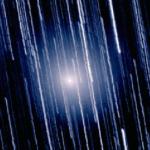 Tempel Tuttle: The Leonid Comet
Tempel Tuttle: The Leonid Comet
16.11.2002
Star trails streak this composite time exposure of comet Tempel-Tuttle recorded by Tim Puckett on January 26, 1998. Then passing through the inner solar system on its 33 year orbit around the Sun, Tempel-Tuttle brightened unexpectedly, but binoculars or small telescopes were still required to visually observe it.
15.11.2002
Spanning southern to northern skies, stars trail across this panoramic view of the African night from equatorial Kenya. The three hour long exposure was made on a clear, dark, mid November evening facing due west and covers just over 180 degrees along the horizon.
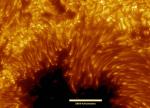 The Sharpest View of the Sun
The Sharpest View of the Sun
14.11.2002
This stunning image shows remarkable and mysterious details near the dark central region of a planet-sized sunspot in one of the sharpest views ever of the surface of the Sun. Just released, the picture was made using the Swedish Solar Telescope now in its first year of operation on the Canary Island of La Palma.
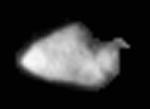 Asteroid Annefrank
Asteroid Annefrank
13.11.2002
NASA's interplanetary probe STARDUST, on its way to Comet Wild 2 in January 2004, passed asteroid 5535 Annefrank earlier this month. Annefrank, named for a holocaust victim who kept a famous diary, is a member of the main asteroid belt between Mars and Jupiter.
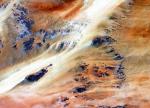 Terkezi Oasis in the Sahara Desert
Terkezi Oasis in the Sahara Desert
12.11.2002
Dominating the top third of Africa is the largest band of dry land on Earth: the Sahara Desert. Stretching across the Sahara are vast planes of sand and gravel, seas of sand dunes, and barren rocky mountains.
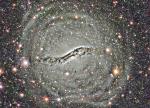 The Outer Shells of Centaurus A
The Outer Shells of Centaurus A
11.11.2002
What causes the surrounding shells in peculiar galaxy Cen A? Last month a fascinating image of peculiar galaxy Centaurus A was released, processed to highlight a faint blue arc indicating an ongoing collision with a smaller galaxy.
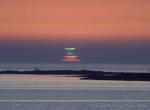 A Green Flash from the Sun
A Green Flash from the Sun
10.11.2002
Many think it is just a myth. Others think it is true but its cause isn't known. Adventurers pride themselves on having seen it. It's a green flash from the Sun. The truth is the green flash does exist and its cause is well understood.
 A Cerro Tololo Sky
A Cerro Tololo Sky
9.11.2002
High atop a Chilean mountain lies one of the premier observatories of the southern sky: the Cerro Tololo Inter-American Observatory (CTIO). Pictured above is the dome surrounding one of the site's best known instruments, the 4-meter Blanco Telescope.
 NGC 6369: The Little Ghost Nebula
NGC 6369: The Little Ghost Nebula
8.11.2002
This pretty planetary nebula, cataloged as NGC 6369, was discovered by 18th century astronomer William Herschel as he used a telescope to explore the constellation Ophiucus. Round and planet-shaped, the nebula is also relatively faint and has acquired the popular moniker of Little Ghost Nebula.
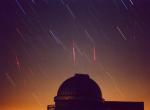 2001 Leonids: Meteors in Perspective
2001 Leonids: Meteors in Perspective
7.11.2002
The 2001 Leonid storm was so intense that the meteor shower's radiant, the point on the sky from which the fleeting trails seemed to diverge, was easy to spot. But the bits of debris that created the meteors really moved along parallel paths, following the orbit of their parent comet Tempel-Tuttle.
|
January February March April May June July August September October November December |
|||||||||||||||||||||||||||||||||||||||||||||||||